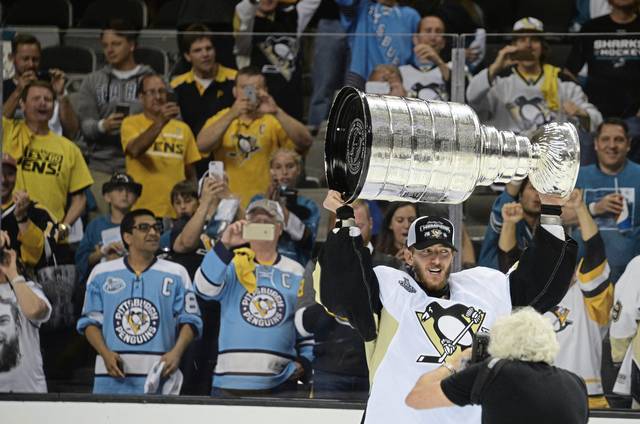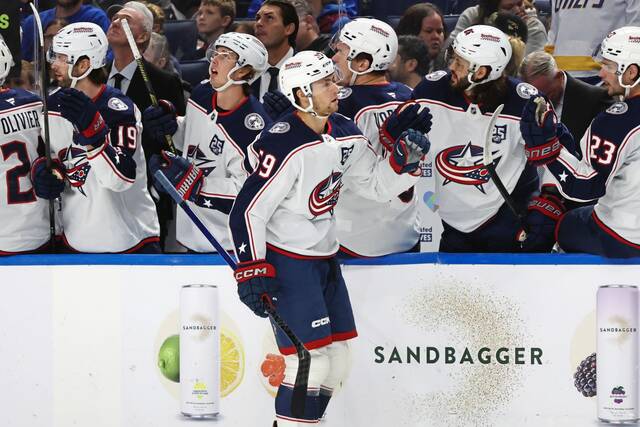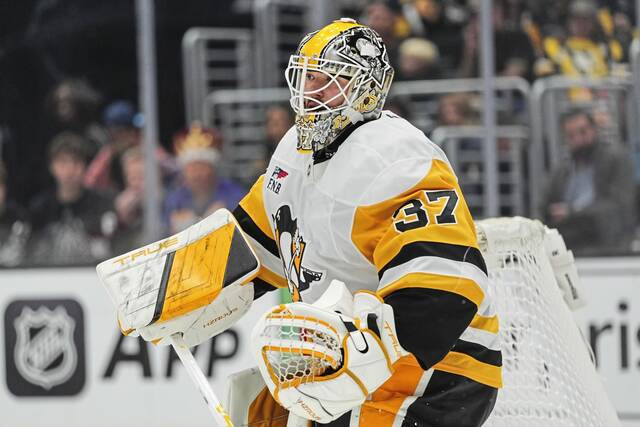No. 30: Matt Murray
A few weeks after his 22nd birthday, Matt Murray reached a milestone.
He made his first trek to the Golden State in the spring of 2016.
“First time ever in California,” said Murray, a native of Thunder Bay, Ont. “I’m from pretty far up north in Ontario. The hot kind of bugs me a little bit. But I really like it.”
Of course, Murray wasn’t a tourist. He was on a business trip.
After Marc-Andre Fleury sustained a concussion late in the 2015-16 regular season, Murray took over as starting goaltender and led the Pittsburgh Penguins on a dominating run through a postseason that culminated with victory in the Stanley Cup Final against the San Jose Sharks.
In the process, Murray became the sixth rookie goaltender in NHL history to win the league’s championship.
Murray’s second postseason might have been more impressive than his first, even if he missed the first two-plus rounds because of injury.
After he replaced Fleury early in the Eastern Conference final, Murray appeared in 11 games and had a 7-3 record with a 1.70 goals-against average, a .937 save percentage and three shutouts. Two of those shutouts came in the final two games of the Stanley Cup Final against the Nashville Predators.
Because of the NHL’s rules on service time, Murray technically was a rookie in 2016-17, and that allowed him to become the only rookie goaltender to win the championship twice.
Since then, Murray’s career has been pockmarked by injuries and inconsistency, and there are even doubts he’ll remain with the team beyond this postseason, particularly with the NHL expanding against next summer.
But few players in Pittsburgh sports history have made as immediate impact as Murray.
Other No. 30s of note:
• Like a lot of players of that era, the Penguins’ first starting goaltender, Les Binkley, benefited from the NHL expanding from six to 12 teams in 1967. Making his NHL debut at the age of 33, Binkley manned the cage for the Penguins during their inaugural season of 1967-68. Appearing in 54 games, Binkley’s six shutouts remained the franchise’s single season record until Tom Barrasso eclipsed it in 1997-98 with seven.
• A prolific player at Pitt as No. 24, running back James Conner joined the Steelers as as a third-round draft pick in 2017 and adopted No. 30. After serving as Le’Veon Bell’s backup in 2017, he broke through as a starter in 2018, rushing for 973 yards as well as 12 touchdowns and earned a Pro Bowl selection.
• Fullback Tom “The Bomb” Tracy was a two-time Pro Bowler for the Steelers in the late 1950s and early 1960s. From 1958 through 1960, he reached the 1,000-yard mark in total offense three consecutive seasons.
• An 11th-round pick in 1980, running back Frank Pollard lasted nine seasons with the Steelers throughout the decade. A replacement for star Franco Harris at fullback, Pollard was reliable but hardly spectacular. His greatest moment for the Steelers may have been a 99-yard, two-touchdown performance in a 24-17 upset of the Denver Broncos in the 1984 AFC Divisional Round.
• An All-Star earlier in his career with the Detroit Tigers, first baseman Jason Thompson enjoyed a renaissance with the Pirates in 1982. Hitting for 31 home runs and 101 RBIs, he was selected to the All-Star Game that season.
• Pirates second baseman Dave Cash helped create history by being part of the first all-Black lineup in major league history on Sept. 1, 1971. A little more than a month later, the Pirates claimed the franchise’s fourth World Series title.
• Wilmer “Vinegar Bend” Mizell only spent three seasons with the Pirates but was vital to their World Series title in 1960. Acquired early that season in a trade with the St. Louis Cardinals, Mizell went 13-5 for the Pirates and helped them claim the National League pennant.
• Initially wearing No. 44 for the Pirates, Truett “Rip” Sewell was a dominant pitcher for the Pirates from the late 1930s through the 1940s. A three-time All-Star, he led the National League in wins with 21 in 1943. Credited with inventing the eephus pitch, Sewell is still seventh in franchise history with 173 career wins.
• A native of Monaca, 6-foot-7 Mickey Davis played guard and forward for Duquesne from 1969 through 1971, averaging 17.1 points. A member of the ABA’s Pittsburgh Condors in 1971-72, Davis also spent four seasons with the NBA’s Milwaukee Bucks.
Check out the entire ’Burgh’s Best to Wear It series here.








